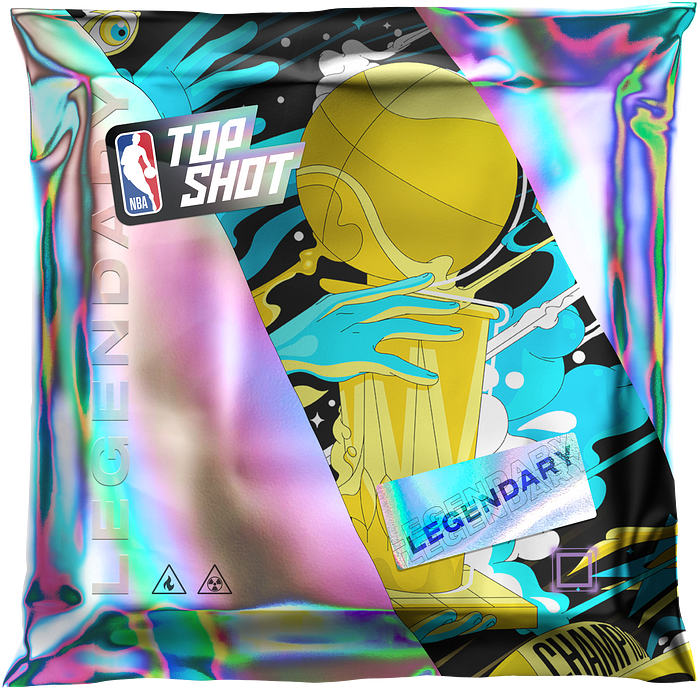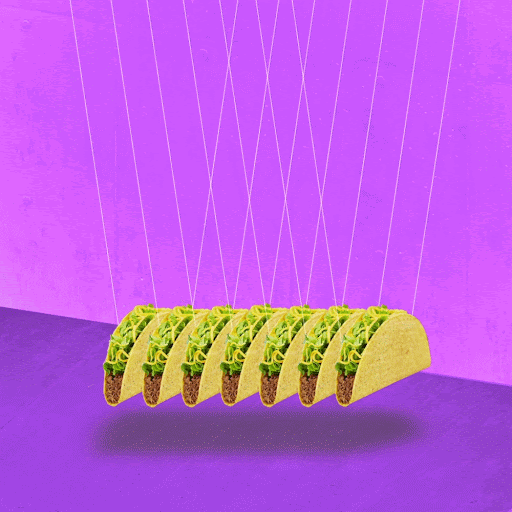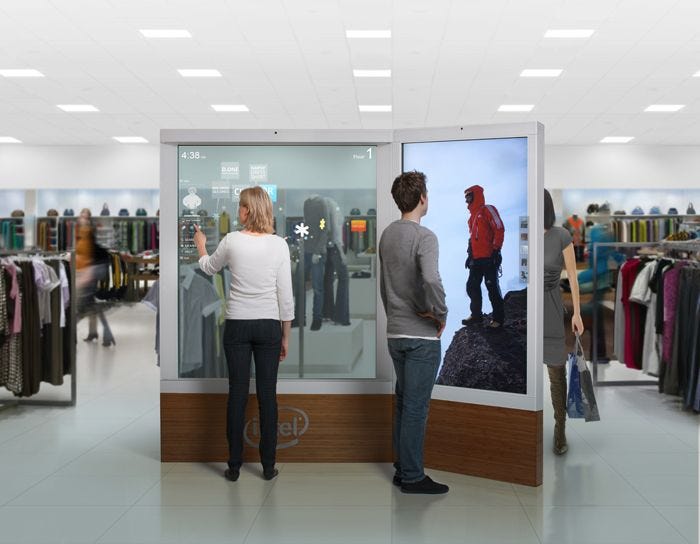Why NFTs are the future.
At this point, almost everyone has heard the phrase NFTs being muttered about. If you haven’t, I’d start here. But chances are, you’ve seen the insane sales that high-profile artists like Beeple have fetched at auctions. There’s a lot of buzz about NFTs, but how real is it all? It took me a while to wrap my head it all and what it means, but I am here to convince you that it’s the future.

Traditionally, digital goods were tied to the provider you purchased them from. If I buy a digital album from Apple, I technically don’t actually own that album — it’s merely a license for me to stream that album. It’s the equivalent of buying a physical album at Walmart and only being able to play that album if I was standing in a Walmart store. But what if I could buy that album from the person the actual artist and I could take that album anywhere I wanted, as long as I could authenticate my owning it via a digital token? This is why NFTs are the future.
Right now we are seeing NFTs as digital artwork, motion artwork and music, but it will eventually extend into everything and anything that is digital — from goods, apparel, avatars, AR/VR, utilities, experiences and anything else we haven’t dreamt up yet.

Collectibles
When I first heard about the NFT card marketplace, I was a little confused. NBA’s Top Shot cards were similar to physical trading cards but were all about collecting the top video moments of famous plays. It was a genius way of translating the physical cards people were used to into a digital collectible that was special and unique. Topps is getting into the NFT market in late April and the physical trading card marketplace is going to quickly transform into a digital marketplace. Apply this to all collectible physical goods and this market will become MASSIVE in the upcoming year. Every major entertainment IP will get into the collectible NFT market in the coming months.
I predict that the collectibles NFT marketplace will legitimize the entire category as a whole.
Metaverse Digital Goods
2021 is the year of the metaverse — but what is it? For starters, the emerging metaverse is all around us. It exists in video games like Fortnite and Roblox, but it also is being built on top of our existing world in creative ways. There are a lot of definitions of the metaverse, but this is my favorite from Enjin:
The “metaverse” is a shared digital space that seamlessly integrates aspects of the real world — specifically things like ownership, identity, and financial value.
As we spend more and more of our lives living and playing in digital worlds, we will want the ability to really express ourselves, just like we can in the real world. While the traditional apparel brands have slowly been jumping into virtual worlds, like Animal Crossing, there has been a rise in digital fashion houses, such as The Fabricant.
Imagine purchasing a pair of limited edition digital sneakers from its creator and I could then outfit my digital avatar across all the metaverses with these coveted sneakers? This would mean that I truly own this pair of digital sneakers. Since that pandemic has begun, people have been spending a significant amount of time in virtual worlds — and it’s not going to stop anytime soon.

I noticed that my teenage daughter was spending loads of money in her digital metaverse worlds (Pokemon, Minecraft), purchasing all kinds of digital goods. She’d purchase coins to buy outfits, music, new weapons, new characters, and more. This behavior is extremely common across all the video game world. The digital goods marketplace is a 10 Billion dollar industry — the Fortnite audience spending 1 Billion dollars. But what if I could purchase something in Fortnite and show it to my friends outside of the gaming platform? That’s where NFTs come in.
If I owned the digital product as an NFT, it would be in my digital wallet and I could technically use it elsewhere. But we are a ways off from this. It will take open standards and
Digital Experiences or iNFTs
From augmented reality lenses to virtual reality to interactive entertainment, digital experiences will be collected like memories. Since the start of the pandemic, digital experiences have slowly been replacing physical experiences. As the world opens back up, digital experiences will become a mainstay as well as augmenting real-world physical experiences.

Facebook and Apple (yet to be announced) are doubling down on the metaverse with VR and AR products. If this tells us anything, there will be a huge demand for experiences and products within both the Oculus and Apple platforms. It’s safe to say that neither company will embrace NFTs at first, as it competes with the closed-off infrastructure that they own 100% of.
When we created the latest Take This Lollipop, we needed a way to help monetize it, as the server costs were going to grow astronomically. After a few hundred million views, we experimented with a ticket system. You buy a ticket and get up to 3 views of the experience. You can view it once and give it the unique URL to 2 friends, or go through the experience 3 times all by yourself. Now that NFTs are becoming mainstream, digital experiences like Lollipop can be collected, traded, and sold. This is huge news for creators that could potentially use NFT tokens as tickets into digital experiences.

Movies, Video Games and Digital Products
Over the last 5 years or so, a large percentage of people have been purchasing movies and video games digitally — opting to download instantly versus wait for a physical product to arrive in the mail. Like I mentioned before, if I purchase a movie from Apple or Sony, I can only watch the movie within their ecosystem. This works really well if you’ve fully bought into the product universe for the particular company.
I could see a huge seismic shift in the digital entertainment landscape if the industry embraced the concept behind NFTs. What if Paramount minted its own NFT of the movie Top Gun: Maverick. You bought it from Paramount and your relationship for that movie was strictly with its creator, not a third party. You’d need a player on every device you wanted to watch the movie that could authenticate your token/ownership of that movie. Do you know how many formats I’ve purchased the movie The Goonies in? VHS, DVD, Blu-Ray, Apple streaming. What if I could just purchase it once and actually own a copy of the movie? Makes sense from a consumer point of view, for sure.

I’ve owned almost every video game system and have purchased more video games in my lifetime than I would care to admit to. One of the pain points of buying into the “digital download” versus physical ownership of a video game has been the resale value. When I own a physical copy of the video game, I can sell it back to GameStop for a few bucks. It has an afterlife. What if I purchase a plethora of games digitally on the Playstation, but I decide I want to upgrade to the new Xbox? Every video game you buy is tied to that ecosystem, so every game you previously purchased wouldn’t work with your new system.
So, what if I could purchase the video game as an NFT from the developer? What if I could own the video game, console-free, and can use multiple systems to play the game or just one? Both exciting thoughts, but I’d say that the biggest benefit of video game NFTs (even if developers made you purchase a separate version per platform) would be resale and trading. This is a HUGE thing that has been missing from owning a digital product. If I am done watching Top Gun and wanted to trade it or gift it to my mom, I’d love that option. The way digital entertainment is currently sold and streamed, we technically don’t really own the product — like I would if I purchased the physical version. The word I keep throwing around is tangible. I think we need to make digital products tangible — and NFTs can do that.
Brands
Consumer brands always want to be part of “what’s next”, and a few brands jumped quickly into the NFT market. Taco Bell dropped animated GIF NFTs featuring its tacos on Rarible that have sold tens of thousands of dollars. Pizza Hut tried the same thing but didn’t see the same success. This prompts the question of the quality of the content of the NFT versus the novelty value.

Over the last year, brands have been creating limited-edition physical merchandise that sells out quickly, such as Pizza Hut’s $150 weighted blanket that sold out in a few hours. Fans love to collect one-of-a-kind merch from the favorite brands. And as brands try to figure out how to give their fans unique digital goods that are valuable, I think we will see some interesting innovation with the branded NFT space. Speaking of which, Luxury brands are really primed to move into the NFT market and that could be really exciting. The take-away is that brands could and should be thinking about the future of the NFT market as an opportunity to let their fans own original products and experiences.
NFT 2.0
We are currently at the beginning of NFT 1.0. It’s exciting, weird, confusing, lucrative, and complicated. Every day is going to bring more innovation, challenges, and complications. First off, the carbon footprint issue is a big concern for a lot of artists and collectors. Technically NFTs aren’t really responsible for the massive amount of CO2 emissions, but the underlying blockchain technology behind Ethereum is. It’s safe to say that the entire industry is quickly looking at ways to reduce its footprint.
Right now, getting into the NFT marketplace as a consumer is cumbersome — you need to purchase Ethereum and you need a blockchain wallet. While there are lots of tutorials on how to get started collecting NFTs, it’s not an easy process by any stretch of means. I‘m hoping that in the next six months we will see massive improvements in the ease of getting into blockchain marketplaces.

Every day there are massive changes, innovations, and improvements happening across the NFT marketplace. I am really excited for the next wave of NFTs and the companies that will continue to push the boundaries of what is possible, helping define the future. I am also hoping that some of the ideas in this article could actually be realized in the upcoming year.
Follow me on Instagram, Twitter, and LinkedIn for updates. I have something really exciting to announce soon. Thanks for reading and ✌️.

